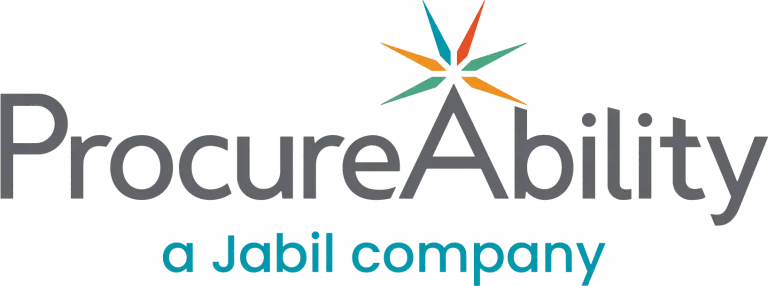The Future of AI in Procurement:
Quick wins using the power of passive AI

Generative artificial intelligence (AI) is revolutionizing the nature of work across almost every industry, around the globe. We see it in creative work, where large language and image AI models generate automated content. In manufacturing, generative AI augments human-based product design efforts, optimizing key processes, and improving quality control. For example, it’s changing how healthcare is delivered, improving patient outcomes through better diagnosis and information sharing.
To better understand AI’s role in transforming the procurement landscape, ProcureAbility and our AI partner, dSilo, present our co-authored Insights series, “The Future of AI in Procurement.” In the first installment of this series, “The transformative impact of generative AI,” we discussed how generative AI is creating new value in procurement. In this second blog, “Quick wins driven by the power of passive AI,” we’ll explain more about the “passive” AI use cases (where the technology is presenting insights but not acting on them) that can drive immediate benefits.
Right out of the gate
Deploying AI capabilities is a journey that varies depending on an organization’s starting point. However, certain trends are already emerging. Unsurprisingly, the main focus is on EBITDA improvement, though it is not the only driver. In North America, buyers prioritize quantifiable ROI out of the box. In Europe, AI adopters balance cost savings with risk management driven by regulations.
With this ROI focus, customers aim for near-term savings and other benefits. This involves reconciling unstructured information and generating actionable insights for category leads, buyers, and A/P clerks. Some customers are exploring generative AI use cases, but they view this as a later phase after achieving quick-hit successes.
In this blog, we cover “passive” AI use cases, where technology presents insights without taking action. These can drive immediate benefits. In our next installment, we will discuss generative AI capabilities and how they can create work products.
Here are several use cases where AI is already impacting procurement. It fills gaps in legacy systems, reconciles data, and operates at a speed and scale impossible without this groundbreaking technology.
Spend analytics
Most legacy spend tools rely on payments data to provide visibility into spend. This approach has the advantage of accuracy because the payables data comes directly from the system of record.
While this is a solid starting point, AI can take spend analysis several steps further to deliver deeper insights. For instance, AI can leverage line-item details from invoices and other payment documents, such as credit card statements. This provides visibility at the lowest level and enables more granular categorization of spend. With this level of detail, it becomes possible to separate charges like freight, taxes, duties, and overhead fees. By combining traditional spend analysis methodologies with AI, organizations can achieve full-spectrum data visibility and uncover opportunities for savings and process improvements.
Furthermore, AI enhances purchase price variance analysis for the same items across different suppliers, locations, and seasons. For example, one of dSilo’s customers, operating over 340 hospitality facilities across the U.S., can compare costs for common items like linens to identify the best prices available. Similarly, a ProcureAbility client uses a static AI to assess spend and usage patterns over the past five years. The AI then generates recommendations such as quarter-end discounts, volume-based pricing, or long-term capacity lock-ins. This information feeds directly into the quarterly strategic sourcing and contracting pipeline, enabling the organization to capture measurable value.
Category management
AI-powered spend analytics provides a deeper understanding of what is being purchased and from whom. Category managers can see quantities at the line-item level, helping them prepare for supplier negotiations. This also highlights maverick spend—for example, items bought from non-preferred suppliers. A company might have negotiated pricing for PCs and peripherals with one supplier and office supplies with another, yet users buy peripherals from the office supply vendor at list price. AI can reconcile invoice items with contracts and flag mismatches. Without this technology, the only alternative would be manual spot audits.
One of ProcureAbility’s clients uses static AI to review past category plans, spend profiles, and sourcing and contracting databases. The AI generates a recommended category plan that is refined through stakeholder interviews. Historically, category managers had to spend significant time analyzing and synthesizing this information. With AI, they can now focus on gathering inputs and performing what-if analyses instead of manual data synthesis.
Contract management
Typically, executed contracts sit in a repository that provides access, but analytics is only possible on the limited set of meta data fields that are captured when the contract becomes active.
AI has the power to extract many more meta data fields, making it possible to analyze contracts in aggregate, as well as individually. dSilo has 140 data elements they’ve extracted for various customers depending on their business needs, including for a European customer that wants to understand which of their contracts already include a GDPR clause and which do not. Once their contracts are ingested onto the platform, dSilo can report this information back, sorted by filters such as geography, category, or type of agreement.
One of ProcureAbility’s clients is using AI in clause library management of Contract Lifecycle where the AI recommends the fallback positions based on the seventeen input fields and historical approach and gold standard approach. The category manager then reviews the options and decides the best possible language within the clause library. The AI continues to learn as the category manager makes decisions in these clauses and fine tunes language for future. AI has changed the way category managers manage risk reviews and acceptable variations with the language while finalizing the contract.
Invoice processing
Another powerful passive AI application is invoice processing. When contracts and invoices are uploaded to the AI platform, it can reconcile them at scale. This enables purchase price verification, even from complex rate tables. For example, a customer receives monthly professional services invoices with hundreds of line items. The platform extracts rate tables, reconciles them to the invoice, and flags discrepancies during the invoice approval workflow. This greatly improves accuracy and productivity for the A/P team.
AI can also verify payment terms. About 1% of spend involves invoices paid before the contracted due date, often because the invoice states different terms. AI solves this by integrating into the approval workflow, eliminating after-the-fact audits, follow-ups with suppliers, and the need for credits.
Looking ahead
Undoubtedly your organization has its own gaps and opportunities to create new value by closing these holes with AI. Start to collaborate with your colleagues and a trusted third-party partner who is experienced in planning out the digital roadmap for procurement, to identify where an AI solution can replicate human processes and do it at scale.
The emphasis here isn’t on hitting homeruns but rather singles and doubles in bunches. If you’re able to do that, you will have implemented AI with a strong tangible ROI that will also allow your team to focus on more complex issues.
In our next blog of this Insights series, “The Future of AI in Procurement: Transforming theory into practice,” we’ll look at taking the next step and utilizing the generative capabilities of AI to create work products and drive even greater value.



